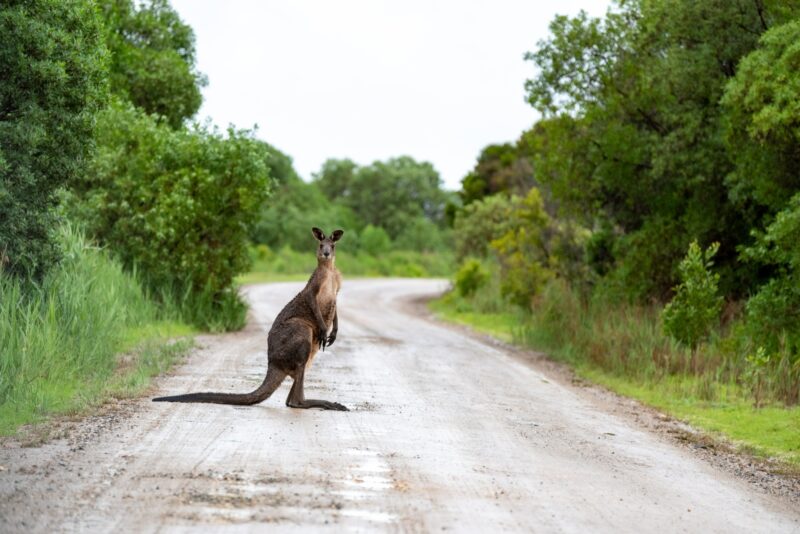How much warming would the party climate positions lead to? Analysis
Share

Ahead of the upcoming Australian elections, Climate Analytics has analysed the global warming implications of the 2030 climate targets of the political parties and independents: the LNP, the Labor Party (ALP), the Teal Independents (the Zali Steggall Bill), and the Greens.
The results are stark, showing the LNP targets are consistent with 3 ̊C of global warming (bordering on 4 ̊C), the ALP’s target is consistent with 2 ̊C, and the Teal Independents and Greens consistent with 1.5 ̊C of warming.
“Already, Australians are feeling the heat of a world that has warmed by just over one degree, and it’s not pretty. That the LNP appears committed to risk global warming of 3°C or more is beyond irresponsible,” said Climate Analytics CEO Bill Hare.
The recent IPCC reports have reinforced the urgency of limiting warming to the Paris Agreement’s warming limit of 1.5 ̊C, and have shown this remains feasible, but that urgent action is needed to reduce emissions by 2030.
In Glasgow last year Australia famously refused to increase its 2030 commitments, however the Glasgow Climate Pact (2021), which Australia signed onto, requires governments to strengthen their 2030 NDCs by November this year to align with the 1.5 ̊C goal. There is a strong expectation from the international community and allies that Australia will bring forward a 1.5 ̊C goal aligned 2030 target by November at the UN climate Conference – COP27 – in Egypt.
“Australia has a strong self interest in the world taking sufficient action to limit warming to 1.5 degrees Celsius, as exceeding this level would doom the Great Barrier and Ningaloo Reefs to extinction, lead to very substantial reductions in wheat yields, increasingly catastrophic heat and flooding events, as well as posing a major risk to human health and infrastructure,” said Hare.
“With the IPCC warning that action in the next few years is the last chance we may get to limit warming to 1.5 degrees Celsius we have evaluated the consistency of the major political parties and independent grouping positions for emission reductions by 2030.
“The magnitude of emission reductions by 2030 are critical to the feasibility of the world reaching net zero by 2050 or earlier. If governments come up with insufficient reductions like those of Australia, then net zero may well be impossible.”
Liberal National Coalition (LNP) 26-28% Consistent with least 3°C, bordering on 4°C
If all governments were to make the same effort as the climate change targets put forward by Australia’s Liberal National Coalition (LNP) party, the world would see global warming of at least three degrees, bordering on four degrees.
“Under this level of warming we’d see the total destruction of the Great Barrier Reef, and all other tropical reefs such as Ningaloo, also a World Heritage site. Intense heat events that have recently occurred once in a decade could happen almost every year, and highest maximum temperatures are likely to be 3°C warmer than in recent times.”
ALP 43% by 2030 target consistent with 2°C warming
The Labor Party’s target of a 43% emissions cut by 2030 is consistent with two degrees of global warming, and hence is not consistent with the Paris Agreement. This position is also not consistent with the survival of the Great Barrier Reef or Ningaloo Reef, and increased heat extremes occurring every five years.
Under 2°C of global warming the most extreme heat events that occurred once in a decade in recent times could occur about every three years and would be significantly hotter with the highest maximum temperatures about 1.7°C hotter than the in recent decades.
Greens (74%) and Teal Independents (60%) consistent with Paris Agreement’s 1.5 ̊C limit
The Greens, at a 74% cut by 2030, would be a target most comfortably consistent with 1.5 ̊C.
The Climate Analytics analysis took the Zali Steggall net zero bill – a 60% emissions cut by 2030 – as a common policy amongst the Teal Independents. This would be consistent with 1.5 ̊C of warming, but at the upper end of the emission pathways consistent with the Paris Agreement.
Limiting global warming to 1.5°C would allow some regions of the Great Barrier Reef and other tropical reefs such as Ningaloo around Australia to survive.
Under 1.5°C global warming the increase in frequency of the most extreme heat events that occurred once in a decade in recent times could be limited to about every five years, and the increase in maximum temperatures limited to about 1°C more than those in recent times.
The Climate Analytics analysis also looked at the party and independent targets without including Land use, Land Use Change and Forestry (LULUCF), which gives the “real” emissions cuts without being clouded by what Hare describes as “a very inaccurate area, where all targets get to look a lot better than they really are.”
“Setting aside dodgy accounting for deforestation, the picture in reality is even worse. Here, the real targets for reducing fossil fuel combustion, industry, transport waste and agriculture translate into reductions in emissions (excluding land use ) of only 11-13% for the LNP, Labor 31%, Teal Independents 50% and Greens 67%.”
Reducing actual emissions from fossil fuel combustion, industry, transport waste and agriculture are critical to limiting warming rather than manipulation of land use emissions and sequestration data by choosing historically high deforestation baselines is needed.











